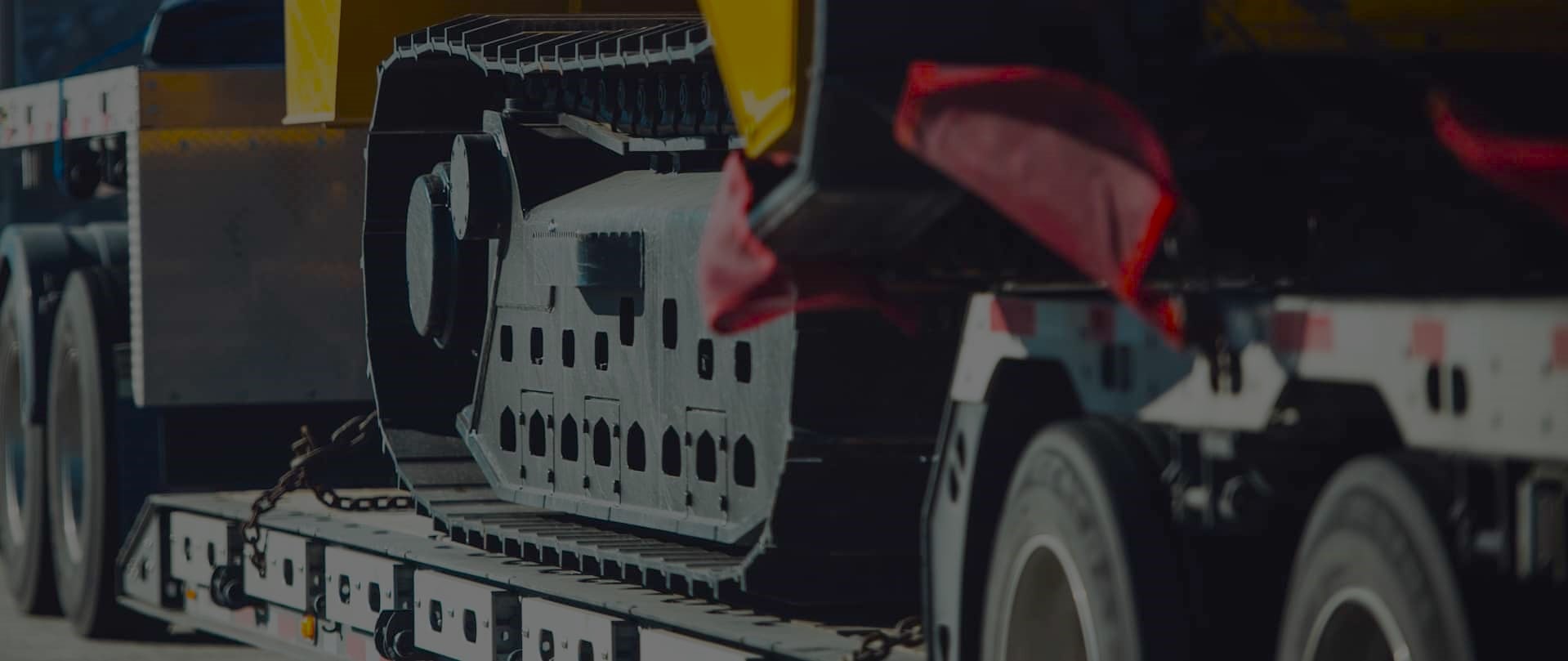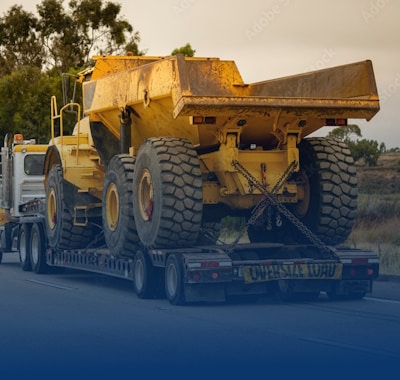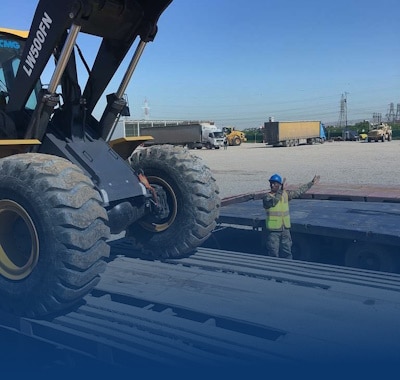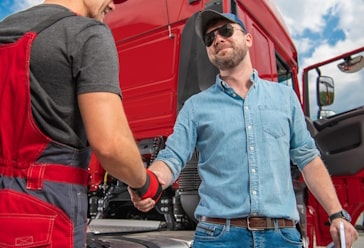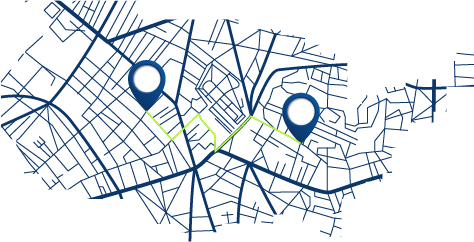Managing Heavy Loads on Public Highways: Effective Techniques
Freedom Heavy Haul can offer expedited Pickup and Delivery for any size shipment anywhere in the USA. Contact us today for No Hassle, No Pressure Pricing.
Transporting oversized loads requires careful planning and precision. At our core, we prioritize safety and efficiency to ensure every load reaches its destination without incident. Proper preparation is key, from securing the equipment to choosing the right route.
We understand the challenges of moving heavy vehicles and equipment across public highways. That’s why we focus on clear communication and thorough inspections. Our team ensures every oversized load is handled with the utmost attention to detail.
By adhering to industry standards and leveraging our expertise, we minimize risks and maximize efficiency. Whether it’s hauling machinery or transporting specialized vehicles, we’re committed to delivering reliable results. Stay tuned as we dive deeper into the strategies that make this possible.
Safety First: Understanding Heavy Load Transportation Challenges
Navigating the complexities of oversized load transport demands expertise and vigilance. Every move involves unique challenges, from securing the equipment to planning the safest route. We prioritize safety at every step to ensure smooth operations.
Key Risks and Hazards
Transporting oversized loads comes with inherent risks. Road obstructions, unstable cargo, and unpredictable weather can pose significant hazards. A documented risk assessment is crucial to identify and mitigate these dangers. Protective measures, such as proper PPE use, further safeguard both equipment and personnel.
Regulatory Considerations for Public Highways
Compliance with regulations is non-negotiable in heavy haul transportation. Permits ensure that oversized loads meet legal requirements for weight and dimensions. Staying updated on local and federal guidelines helps avoid delays and penalties. Proper documentation is essential for seamless operations.
In construction and heavy cargo operations, clear communication among drivers and team members is vital. Addressing overweight and over-dimension issues requires attention to detail. By adhering to these practices, we minimize risks and ensure safe transport every time.
For more insights on managing risks in heavy haul operations, explore our guide on effective risk management.
Techniques for Managing Heavy Loads on Public Highways
Ensuring the safe movement of oversized cargo demands precision and expertise. We focus on proven methods to secure heavy equipment and minimize risk during transit. Proper preparation is essential for a smooth operation.
One critical step is securely chaining down the load. Using the right chains and binders ensures stability and prevents shifting. We verify each connection point to guarantee the equipment stays in place throughout the journey.
“The key to safe transportation lies in meticulous planning and execution.”
Designating roles during the loading process is equally important. Clear responsibilities ensure everyone knows their tasks, from securing the load to inspecting the equipment. This teamwork reduces errors and enhances safety.
We also emphasize the importance of verifying loading methods. Double-checking securement points and weight distribution minimizes the chance of load shift. These steps are vital for safe and compliant transportation.
- Use appropriate chains and binders for securement.
- Verify all connection points before transit.
- Assign clear roles to team members during loading.
- Inspect weight distribution to prevent shifting.
Continuous communication is another cornerstone of our approach. From planning to execution, we ensure everyone is informed and aligned. This strategy not only improves efficiency but also enhances overall highway safety.
For more insights on planning safe and compliant heavy haul routes, explore our guide on safe and compliant heavy haul routes.
Essential Equipment Inspection and Maintenance
Regular inspections are vital for maintaining safety during equipment transport. We ensure every vehicle and load meets the highest standards before hitting the road. A thorough inspection process minimizes risks and ensures compliance with state regulations.
Safety Checks for Tires, Lights, and Brakes
Every pre-trip inspection begins with a detailed review of critical components. Tires must be checked for proper inflation and wear. Lights and brakes are tested to ensure they function correctly. These steps are essential for preventing accidents and ensuring smooth operations.
Verifying Tie-Down Points and Load Limits
Securing the load is a top priority. We verify tie-down points to ensure they are in good condition and properly spaced. Checking load limits prevents overloading and maintains stability during transit. This process is crucial for both safety and compliance.
| Inspection Area | Key Steps | Purpose |
|---|---|---|
| Tires | Check inflation, tread depth, and damage | Prevent blowouts and ensure stability |
| Lights | Test headlights, brake lights, and indicators | Ensure visibility and communication |
| Brakes | Inspect brake pads and test functionality | Ensure stopping power and safety |
| Tie-Down Points | Verify condition, spacing, and securement | Prevent load shift and ensure stability |
By following these steps, we ensure every vehicle and load is ready for the road. Continuous documentation of inspection results also facilitates compliance audits. This systematic approach keeps operations safe and efficient.
Route Analysis and Oversized Load Planning
Planning the transportation of oversized cargo starts with a detailed route analysis. We prioritize safety and efficiency by identifying potential challenges and planning accordingly. This step ensures every load reaches its destination without delays or risks.
An in-depth route analysis involves reviewing road conditions, including obstacles like low bridges and construction zones. We assess traffic patterns and permit requirements to avoid disruptions. This proactive approach minimizes risks and ensures smooth transportation.
To plan a route that minimizes risk, we follow these steps:
- Identify and avoid low-clearance bridges and narrow roads.
- Check for ongoing construction or road closures.
- Use real-time data to assess traffic and weather conditions.
- Schedule trips during off-peak time to reduce accident risks.
Leveraging technology is essential for efficient route mapping and permit checks. Advanced tools help us create the safest and most efficient path for every load. This not only saves time but also enhances overall safety.
| Step | Action | Benefit |
|---|---|---|
| Route Mapping | Use GPS and mapping software | Identifies safest and fastest path |
| Permit Checks | Verify local and federal requirements | Ensures compliance and avoids penalties |
| Real-Time Data | Monitor traffic and weather | Reduces delays and accident risks |
| Off-Peak Scheduling | Plan trips during low-traffic hours | Minimizes congestion and hazards |
Proper planning increases operational efficiency and passenger safety. By addressing potential challenges early, we ensure every load is transported securely and on schedule. Trust us to handle your oversized cargo with precision and care.
Effective Securement Methods and Tie-Down Procedures
Proper tie-down methods are critical for safe and efficient transport. We focus on ensuring every load is securely fastened to prevent movement during transit. This process involves meticulous attention to detail and adherence to state guidelines.
Proper Chaining and Binder Matching
Using the right chains and binders is essential for robust securement. We match binder and chain grades to meet the required working load limits. This ensures the equipment stays in place, even under challenging conditions.
Checking for slack is another crucial step. We ensure linear force distribution by tightening connections and verifying securement points. This minimizes the risk of load shift and enhances overall safety.
Common pitfalls include using mismatched components or failing to inspect connections. We address these issues by following manufacturer instructions and state regulations. This attention to detail prevents accidents and ensures compliance.
- Match binder and chain grades for optimal securement.
- Check for slack and ensure linear force distribution.
- Follow manufacturer guidelines and state regulations.
- Use the right tools to minimize load movement.
Proper securement not only protects the equipment but also enhances highway safety. For more insights on wide load transport with route mapping and safety, explore our detailed guide.
Team Coordination and Communication Strategies
Effective team coordination is the backbone of successful heavy haul operations. We ensure every member understands their role and responsibilities. This approach minimizes risks and enhances overall efficiency.
Assigning Roles for Safe Loading and Unloading
Clear role assignment is critical during loading and unloading. We designate specific tasks to each team member, from the driver to the spotter. This ensures smooth operations and reduces the chance of errors.
For example, the driver focuses on vehicle positioning, while the spotter ensures proper alignment. This division of labor allows for better attention to detail and safer handling of equipment.
Real-time communication is essential to overcome unforeseen challenges. We use hand signals and radios to maintain constant contact. This ensures everyone is informed and can react quickly to any issues.
To enhance coordination, we schedule pre-trip briefings and debriefings. These sessions clarify responsibilities and address potential concerns. This practice improves operational clarity and reduces risks.
| Role | Responsibility |
|---|---|
| Driver | Position the vehicle and monitor road conditions |
| Spotter | Guide the driver during loading and unloading |
| Escort | Ensure safe passage and communicate with other vehicles |
| Team Leader | Oversee operations and resolve issues |
Robust team coordination not only improves safety but also ensures timely delivery. By fostering clear communication and defined roles, we create a seamless workflow. This approach sets the standard for excellence in heavy haul operations.
Pre-Trip Planning: Permits and Documentation Essentials
Effective pre-trip planning is the foundation of successful oversized cargo transport. We prioritize meticulous preparation to ensure every journey is safe, compliant, and efficient. This process involves securing the right permits and preparing detailed documentation.
Obtaining the correct permits is essential for legal and safe highway travel. These documents ensure compliance with state and federal regulations. Without them, delays and penalties can disrupt operations. We handle all permit applications to guarantee a smooth process.
Proper documentation is equally important. Risk assessments, vehicle inspections, and transport permits are critical components. These records not only ensure compliance but also enhance safety. We maintain organized files to facilitate audits and reviews.
Early preparation reduces last-minute hassles and prevents delays. By addressing all requirements ahead of time, we minimize risks and ensure timely delivery. Our team uses digital tools to streamline the permitting process and maintain accurate records.
| Document Type | Purpose |
|---|---|
| Transport Permits | Ensure legal compliance for oversized cargo |
| Risk Assessments | Identify and mitigate potential hazards |
| Vehicle Inspections | Verify equipment safety and readiness |
| Cargo Documentation | Provide details for compliance reviews |
By focusing on these considerations, we ensure every transport operation is well-planned and executed. Trust us to handle the complexities of pre-trip planning with precision and care.
Escort and Support Vehicle Considerations
Escort vehicles play a pivotal role in ensuring the safe transit of oversized cargo. These vehicles act as a protective shield, guiding the primary transport and alerting other drivers to the presence of a large load. Their presence is essential for maintaining roadway safety and preventing accidents.
When transporting oversized loads, escort vehicles must meet specific requirements. They are equipped with high-visibility markings, flashing lights, and clear signage. These features ensure they are easily recognizable, even in low-light conditions. Properly marked vehicles enhance visibility and reduce risks for everyone on the road.
Constant communication between the primary vehicle and escort vehicles is critical. Radios and hand signals are commonly used to relay important information. This coordination helps navigate obstacles, manage traffic, and respond to emergencies effectively. Without clear communication, the risk of mishaps increases significantly.
Maintaining the condition of escort vehicles is equally important. Regular inspections ensure they are road-ready and compliant with regulatory standards. Tires, brakes, and lights must be checked before every trip. A well-maintained vehicle is less likely to experience breakdowns, ensuring smooth operations.
Real-world examples highlight the effectiveness of escort vehicles. For instance, during the transport of a massive industrial component, escort vehicles successfully guided the convoy through narrow streets and busy intersections. Their presence ensured the load reached its destination without incident.
For more detailed insights into the roles and responsibilities of Pilot/Escort Vehicle Operators (P/EVOs), explore our comprehensive guide. Escort vehicles are not just a regulatory requirement—they are a cornerstone of safe and efficient oversized cargo transport.
On-the-Road Safety and Equipment Transport Practices
On-the-road safety is a critical component of successful equipment transport. We prioritize real-time monitoring and regular inspections to ensure every load reaches its destination securely. By adhering to strict protocols, we minimize risks and maintain cargo integrity throughout the journey.
Real-Time Inspections and Check-Ins
Periodic inspections are essential for identifying and addressing issues immediately. We stop at predetermined intervals to verify the equipment and load condition. This process includes checking tire pressure, light functionality, and securement quality. Real-time communication with drivers and escort teams ensures quick resolution of any problems.
Our inspection checklist includes:
- Verifying tire inflation and tread depth.
- Testing headlights, brake lights, and indicators.
- Ensuring chains and binders are properly tightened.
- Confirming the load is stable and secure.
Unexpected events, such as sudden weather changes or road hazards, require immediate action. We equip our teams with advanced communication tools to coordinate responses effectively. This proactive approach reduces accident risks and protects the equipment.
For more detailed insights into maintaining safety during transport, explore our guide on heavy machinery transport with in-depth route planning and safety.
Safe and Controlled Unloading Processes
Unloading heavy equipment safely requires meticulous planning and execution. This final phase of transport is just as critical as loading and transit. We focus on minimizing risks and ensuring the load remains secure until it’s safely on the ground.
Proper site preparation is the foundation of a smooth unloading process. A level, stable area ensures the equipment can be removed without incident. We inspect the site in advance to confirm it meets safety standards and can handle the load.
Site Preparation and Equipment Walkthroughs
Before unloading begins, we conduct a thorough walkthrough of the site and equipment. This step identifies potential hazards and ensures everything is in place. Clear communication with the driver and team is essential to maintain safety.
We follow a step-by-step process to release securement devices in a controlled manner. This gradual approach prevents sudden shifts or accidents. Each tie-down is inspected to confirm it’s ready for release.
During unloading, we monitor the load closely to address any issues immediately. If the equipment shifts or becomes unstable, we pause the process to correct it. This attention to detail ensures the load remains secure.
Team coordination is vital during unloading. We assign specific roles to each member to ensure smooth operations. The driver and spotter work together to guide the equipment safely to the ground.
Documentation is another key aspect of the unloading process. We record the condition of the load and any changes during unloading. This information is valuable for future reference and compliance.
| Step | Action | Benefit |
|---|---|---|
| Site Inspection | Check for level ground and stability | Prevents accidents during unloading |
| Securement Release | Gradually remove tie-downs | Minimizes risk of sudden shifts |
| Team Coordination | Assign roles and communicate clearly | Ensures smooth operations |
| Documentation | Record load condition and changes | Provides valuable reference data |
By following these best practices, we ensure every unloading process is safe and efficient. Our focus on precision and teamwork minimizes risks and protects valuable equipment. Trust us to handle the final phase of transport with the same care as every other step.
Post-Transport Review for Continuous Improvement
After completing a transport operation, a thorough review is essential for continuous improvement. We analyze every aspect of the process to identify strengths and areas for enhancement. This step ensures we maintain the highest standards of safety and efficiency.
Our post-transport review begins with a detailed analysis of documentation. We examine records of vehicle inspections, route plans, and securement checks. This helps us verify compliance with all requirements and identify any deviations from established processes.
Feedback from drivers, escort teams, and support personnel is invaluable. We gather insights on challenges faced during the transporting oversized load process. This information allows us to refine our methods and improve future operations.
For example, after one transport, feedback highlighted the need for better communication during route changes. We implemented real-time updates, reducing delays and enhancing safety. This adjustment is now a standard part of our process.
Thorough reviews also help us address unexpected issues. By documenting and analyzing these incidents, we develop solutions to prevent recurrence. This proactive approach ensures continuous improvement in every operation.
We are committed to learning from every transport. Our post-transport reviews are a cornerstone of our dedication to safety, reliability, and excellence. By focusing on continuous improvement, we deliver exceptional results for every load we transport.
Final Thoughts and Further Resources
Safety and precision are at the heart of every successful transport operation. Throughout this guide, we’ve highlighted the importance of meticulous planning, proper equipment securement, and clear team coordination. These practices ensure every load reaches its destination safely and efficiently.
We encourage you to explore additional resources for deeper insights into transporting oversized loads. Our case studies and customer testimonials reflect our commitment to reliability and expertise. Continuous improvement is a cornerstone of our process, driven by feedback and real-world experience.
For expert advice or a free quote, don’t hesitate to reach out. We’re here to help you navigate the complexities of heavy equipment transport with confidence. Trust us to deliver results that exceed your expectations.
